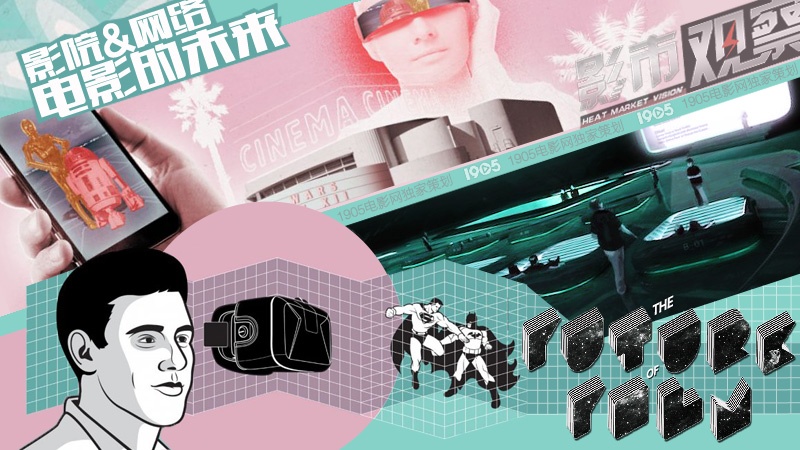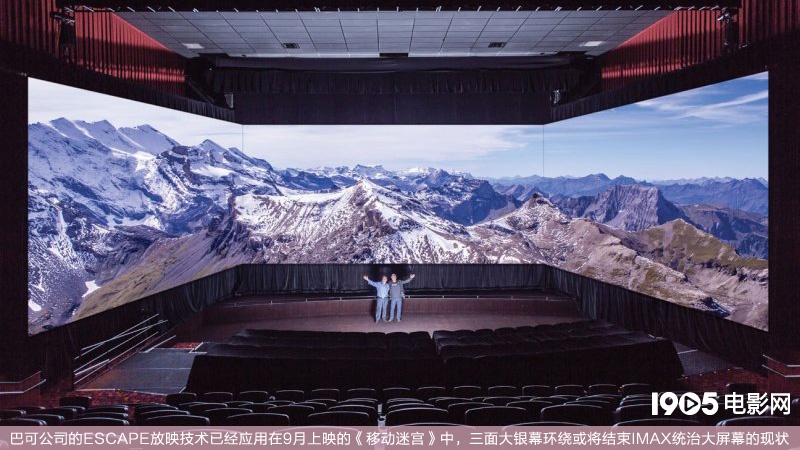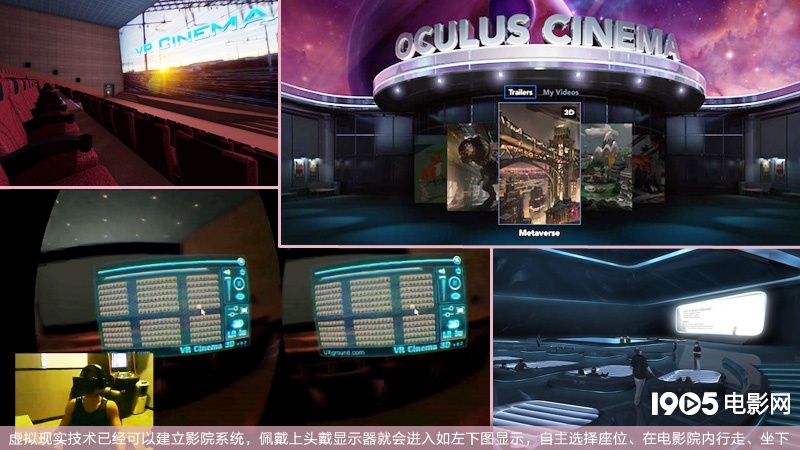The Future of Movies (Part Two): Playing selfies on the big screen and occupying the movie circle through the Internet.

[Cinema] Going around for half a century: bigger, wider and more interactive.
The popularity of this thing has always been a cycle and back to the original point. Fashion is like this, and so is movies.
As early as the 1950s, the appearance of television brought an unprecedented crisis to American movies. The number of movie audiences dropped sharply from 4 billion in the 1940s to 2 billion in the 1950s, and cinemas closed down one after another. In addition, Hollywood is still experiencing the impact of McCarthy’s blacklist, more than 400 artists are excluded and social films are greatly reduced.
Therefore, in order to tide over the difficulties, American movies began to start with technological innovation, and created "panoramic movies" with larger and wider pictures, as well as professional terms such as color movies, wide screens, three-dimensional movies, drive-in theaters and so on, which all sound so powerful nowadays. However, this did not stop the development of television. By the 1960s, 90% of American families had televisions, and the number of movie audiences had dropped to 1 billion. These movie projection devices in those years became a bitter memory in the history of movies after Sunset Boulevard was released.
But today, half a century later, although the home theater system is designed more and more advanced, many people may still be too lazy to go out, but Hollywood projectionists finally know more about the "immersive" charm that the big screen can bring to the film. They not only pick up the panoramic technology again, but also have a more superb "holographic deck" this time — — The cinema of the future is not watching movies, nor walking into a movie (IMAX advertising words), but being in the middle of a movie.


Physical screening: it is no longer a dream to play "panoramic selfie" on the big screen.
What we are talking about here is not 360-degree mobile phone camera software, but taking a selfie of the scenery shown in the cinema and on the big screen. Barco, which has been at the forefront of display technology, has created a brand-new movie viewing method of "Escape". In order to create a more comprehensive perspective and an immersive movie viewing experience, a screen is added on both sides of the main screen. This technology requires a large number of artists to draw computer three-dimensional animation for the film content extended to the next screen. In order to help complete this work, Barco also turned to the game industry for help and improved the screens on both sides with extra special effects rendering work.
This technology will be used for the first time in the "Moving Maze" released in North America on September 19th this year. People are surrounded by three screens, as if they are in a movie and really participate in the crazy chase in the movie. Although there are only five cinemas with "Escape" in the United States at present, if this technology can be successful, it will inevitably change the production method of the film industry and pose a great threat to IMAX.
If you want to see the panoramic solution, how can you interact with the big screen again An American company (Avatron Development USA) is building some new venues, which can use the recognition system to scan the audience’s facial expressions and movements onto a dome-shaped screen that can display 3D effects in 360 degrees during the movie viewing: "You can register before watching the movie, and when the recognition system scans your body and facial expressions, it will convert the information to the screen to interact with these movie characters." Joel hynek, the company’s visual effects technician, explained, "This is the closest we have come to holographic deck technology."
Note: Holodeck technology is a simulated reality system. Different from virtual reality system, this system exists in the real world. People can interact with objects in the system without glasses and tactile simulators. This technology is mainly responsible for the vision by the light and shadow system, and the nearby material generation system generates what people touch and see, which is a bit like the training ground in Machine Hunger Game. This technology first appeared in the sci-fi movie Star Trek, and now it has gradually matured in our real world.

Virtual reality: a private cinema that can be owned at home
When we talked about holographic deck technology, we have to talk about Virtual reality in depth. It is no exaggeration to say that this technology is also a double-edged sword. If it continues to develop, it may pose a greater threat to cinemas than the Internet, or on the contrary, it may also bring more immersive experiences.
The most eye-catching thing in this field is the Oculus Rift, which is launched by the start-up technology company (Oculus VR). With it, there is almost no concept of "screen", and people enter the virtual world. The new version of "Crescent Bay" launched by the company in September this year has been able to monitor the wearer’s movements in a 360-degree range within a 1.5-meter area. The wearer can walk, squat and watch from all angles, and the built-in demonstration characters can basically respond and reproduce each movement accurately, which will have an immersive seamless experience.
In fact, the development of "Oculus Rift" has only been more than two years, but it has developed very rapidly. In the first half of this year, it was acquired by Facebook for $2 billion, which attracted much attention. At present, this technology is mainly used in the field of games, but the company has begun to pay more attention to the film industry and plans to build an Oculus Cinema.
So, what is the effect of wearing this thing that looks like a ski goggles? To put it simply, when you watch a movie, it’s like sitting in a movie theater. You can choose your seat through the computer, and control yourself to go up and down the stairs of the movie theater to see the big screen and all the positions of the movie theater from various angles. At present, this technology is only in the demonstration stage, but imagine that if everyone can sit in the cinema with virtual equipment at home, chat with the people next to them or interact with the creative artists on the stage, then it seems less important to really climb to the cinema at a certain time through the heavy traffic and mountains — — This is so cool, just like owning a cinema!
At the same time, virtual reality technology can also build a bridge between games and movies. Games pay attention to interaction and ignore good plots, but movies are more attractive in story. If this technology can be more mature, I believe even the content of film production will be more different. In this regard, although Hollywood is still in the wait-and-see stage, like the 21st century, FOSS has been looking for the possibility of combining this technology with mainstream blockbusters, and the legendary film company, which moves faster, brought a stunning experience of driving the robot Jaeger in the Pacific Rim at Comic-con this summer — — We can be sure that increasing interactive and immersive experience will be the future goal of watching movies in the "cinema".